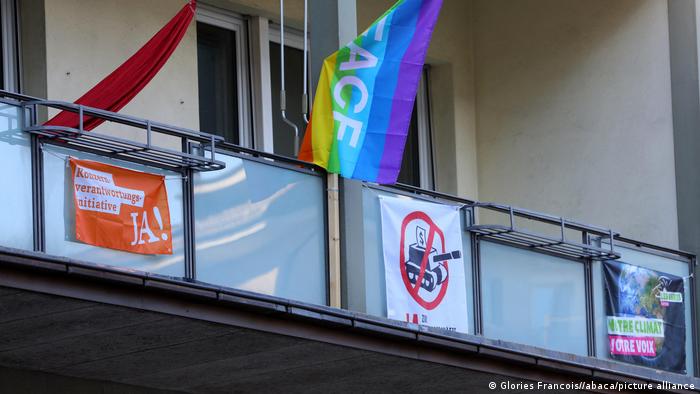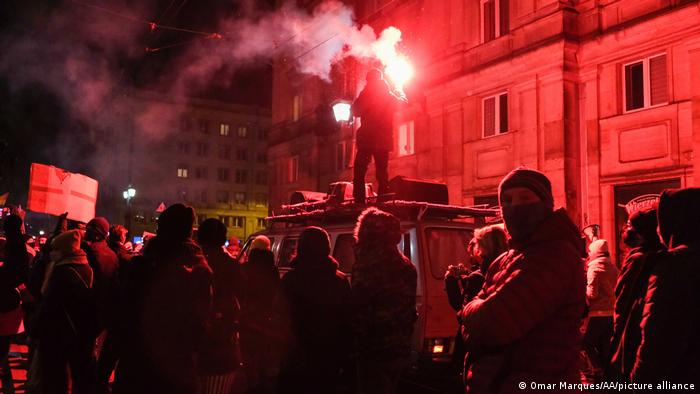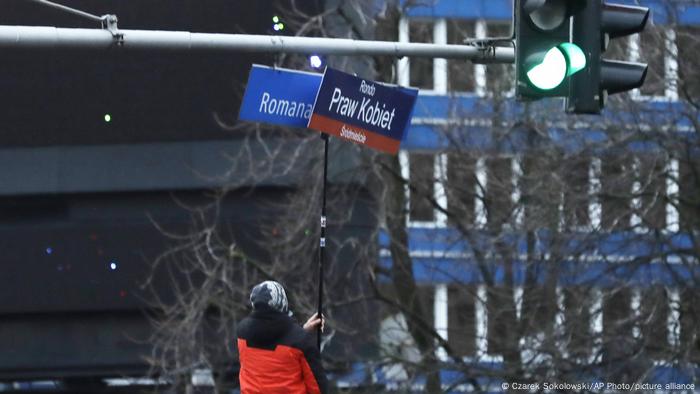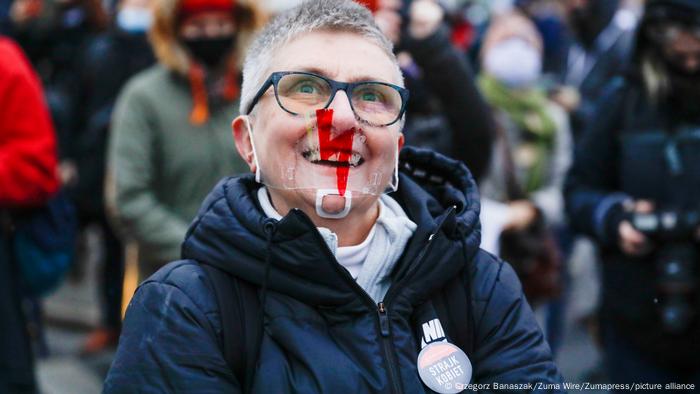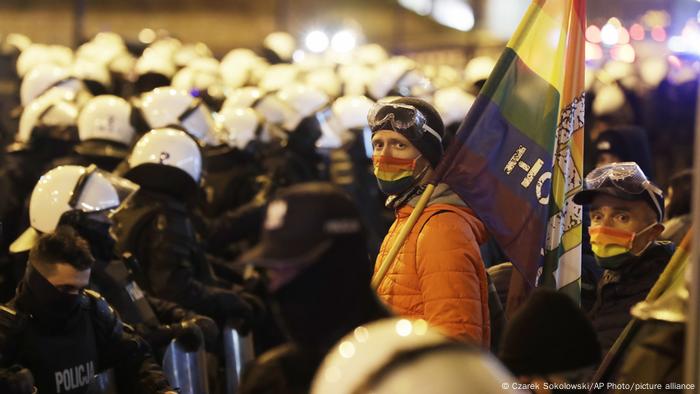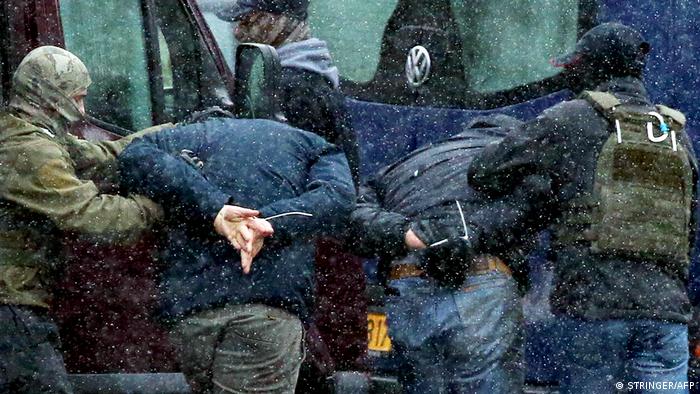SALT LAKE CITY — A mysterious silver monolith that was placed in the Utah desert has disappeared less than 10 days after it was spotted by wildlife biologists performing a helicopter survey of bighorn sheep, federal officials and witnesses said.

© Provided by The Canadian Press
“We have received credible reports that the illegally installed structure, referred to as the ‘monolith’ has been removed from Bureau of Land Management public lands by an unknown party,” on Nov. 27, BLM spokesperson Kimberly Finch said in a statement. The agency did not remove the structure, she said.
The Utah Department of Public Safety said biologists spotted the monolith on Nov. 18, a report that garnered international attention. It was about 11 feet (3.4 metres) tall with sides that appeared to be made of stainless steel.
While Utah officials did not say specifically where the monolith was located, people soon found it on satellite images dating back to 2016 and determined its GPS co-ordinates, prompting people to hike into the area.
Reporters with The Salt Lake Tribune hiked to the spot on Saturday and confirmed that it was gone.
Spencer Owen of Salt Lake City said he saw the monolith Friday afternoon and camped in the region overnight, but as he hiked to the area again on Saturday people passing him on the trail warned him it was gone, the Tribune reported. When he arrived at the spot, all that was left was a triangular piece of metal covering a triangular-shaped hole in the rocks.
“I was really bummed,” said Owen, who posted a video on his Instagram. “It was so pretty and shiny. I wanted to go see it again.”
Riccardo Marino and his girlfriend Sierra Van Meter were travelling from Colorado to California on Friday and decided to stop and see the object after finding the GPS co-ordinates online.
“This was just a once-in-a-lifetime experience that we couldn't miss out,” Marino told KUTV.
On the way, they passed a long-bed truck with a large object in the back and he said he joked “oh look, there's the Utah monolith right there,” he said.
When they arrived at the spot, it was gone.
Steve Adams said he left Helper, in central Utah, at 7 a.m. Saturday to drive to the area. When he arrived and asked someone for directions he was told the tower was gone. He and some friends made the hike anyway.
“It was pretty disappointing,” he told the Tribune. “We were really excited to go down and have an adventure to see it. It feels like it was everybody’s and then it was nobody’s. It’s gone.”
Riccardo Marino
The Associated Press
“We have received credible reports that the illegally installed structure, referred to as the ‘monolith’ has been removed from Bureau of Land Management public lands by an unknown party,” on Nov. 27, BLM spokesperson Kimberly Finch said in a statement. The agency did not remove the structure, she said.
The Utah Department of Public Safety said biologists spotted the monolith on Nov. 18, a report that garnered international attention. It was about 11 feet (3.4 metres) tall with sides that appeared to be made of stainless steel.
While Utah officials did not say specifically where the monolith was located, people soon found it on satellite images dating back to 2016 and determined its GPS co-ordinates, prompting people to hike into the area.
Reporters with The Salt Lake Tribune hiked to the spot on Saturday and confirmed that it was gone.
Spencer Owen of Salt Lake City said he saw the monolith Friday afternoon and camped in the region overnight, but as he hiked to the area again on Saturday people passing him on the trail warned him it was gone, the Tribune reported. When he arrived at the spot, all that was left was a triangular piece of metal covering a triangular-shaped hole in the rocks.
“I was really bummed,” said Owen, who posted a video on his Instagram. “It was so pretty and shiny. I wanted to go see it again.”
Riccardo Marino and his girlfriend Sierra Van Meter were travelling from Colorado to California on Friday and decided to stop and see the object after finding the GPS co-ordinates online.
“This was just a once-in-a-lifetime experience that we couldn't miss out,” Marino told KUTV.
On the way, they passed a long-bed truck with a large object in the back and he said he joked “oh look, there's the Utah monolith right there,” he said.
When they arrived at the spot, it was gone.
Steve Adams said he left Helper, in central Utah, at 7 a.m. Saturday to drive to the area. When he arrived and asked someone for directions he was told the tower was gone. He and some friends made the hike anyway.
“It was pretty disappointing,” he told the Tribune. “We were really excited to go down and have an adventure to see it. It feels like it was everybody’s and then it was nobody’s. It’s gone.”
Riccardo Marino
The Associated Press
Mystery Utah monolith vanishes after visitors trash the secret site
We were not worthy
.

© Kelsea Dockham/Canyon State Overland via AP In this Saturday, Nov. 28, 2020, photo provided by Kelsea Dockham, rocks mark the location where a metal monolith once stood in the ground in a remote area of red rock in Spanish Valley, Utah south of Moab near Canyonlands National Park.
The mysterious metal monolith found in Utah earlier this month has vanished, after sparking alien conspiracy theories and attracting hordes of messy internet pilgrims to its remote location in the desert.
The monolith disappeared sometime on Friday night during the U.S. Thanksgiving weekend, according to the Salt Lake Tribune. The paper sent a reporter to visit the site on Saturday, but the object was gone when he arrived.
The only sign of its presence was a triangular cut left in the rock and a triangular metal slab that likely served as the object's base.
"It's gone," hiker Spencer Owen said in a video posted on his Instagram over the weekend, after the monolith had been removed.
The three-sided, 3.4-metre-tall object became a viral sensation in mid-November when state biologists announced they'd spotted it from a helicopter while counting bighorn sheep in southern Utah. Officials shared photos and videos of the puzzling object, but they withheld its location amid concerns that people might go looking for it.
Internet users figured out the location within a week, and soon the site was overrun with visitors eager to examine the object — and to capture a piece of its viral fame.
Visitors revealed that the object likely wasn't built by aliens, unless those aliens were getting their supplies from a hardware store. The object was a hollow structure made from three sheets of metal, which had been riveted together and embedded in a slot carved into the rock.
Archived satellite footage shows it had been in place since at least 2016, though its exact purpose remains unknown. The prevailing theory is that it was an art project, although no one has come forward to claim it as their work.
The Utah Bureau of Land Management (BLM) confirmed on Sunday that the object had been removed, but the organization did not know who took it away or why.
The BLM had urged people to stay away from the object, citing concerns that visitors would make a mess of the site or get lost on the way.
Video: Mysterious metal monolith discovered in Utah desert
The government organization seemed almost relieved by the development, after monolith-hunters swarmed the area and made a mess of the natural environment around it. The BLM says the site did not have the parking spaces or restrooms necessary to accommodate the sudden influx of people.
"Visitors who flocked to the site parked on vegetation and left behind human waste as evidence of their visit," the BLM said in a statement.
The BLM's Monticello field office says the monolith was a nice distraction from the 2020 news cycle, but it has also been a headache for officials charged with caring for public lands in Utah.
"It was installed without authorization on public lands and the site is in a remote area without service for the large number of people who now want to see it," Amber Denton Johnson, field manager for Monticello, said in a BLM statement. "Whenever you visit public lands please follow Leave No Trace principles and federal and local laws and guidance."
Read more: Famous alien-hunting telescope shut down to avoid ‘catastrophic failure’
Several hikers showed up at the site over the weekend to find nothing but the hole where the monolith once stood.
Hikers Riccardo Marino and Sierra Van Meter say they were among the first to discover that the object had disappeared. They arrived at the site around 11 p.m. and found nothing but a note in the sand reading: "Bye b----."
Someone appeared to have urinated on the site, the couple told local station KUTV.
Marino says they saw a suspicious truck on their way to see the monolith.
"We had passed a truck, a long bed truck, early 200s light-coloured truck with a large object on the back," he told the station. "I joked out loud, like, 'Oh, look, there's the Utah monolith right there,'" he recalled.
It's unclear whether the object was removed by its maker or taken away by someone else.
The monolith's designer and its true purpose have been a mystery since it was first discovered on Nov. 18.
The mystery has only deepened with this latest development, as two new questions remain unanswered: Where is the monolith now, and who — or what — took it?
—With files from The Associated Press
The mysterious metal monolith found in Utah earlier this month has vanished, after sparking alien conspiracy theories and attracting hordes of messy internet pilgrims to its remote location in the desert.
The monolith disappeared sometime on Friday night during the U.S. Thanksgiving weekend, according to the Salt Lake Tribune. The paper sent a reporter to visit the site on Saturday, but the object was gone when he arrived.
The only sign of its presence was a triangular cut left in the rock and a triangular metal slab that likely served as the object's base.
"It's gone," hiker Spencer Owen said in a video posted on his Instagram over the weekend, after the monolith had been removed.
The three-sided, 3.4-metre-tall object became a viral sensation in mid-November when state biologists announced they'd spotted it from a helicopter while counting bighorn sheep in southern Utah. Officials shared photos and videos of the puzzling object, but they withheld its location amid concerns that people might go looking for it.
Internet users figured out the location within a week, and soon the site was overrun with visitors eager to examine the object — and to capture a piece of its viral fame.
Visitors revealed that the object likely wasn't built by aliens, unless those aliens were getting their supplies from a hardware store. The object was a hollow structure made from three sheets of metal, which had been riveted together and embedded in a slot carved into the rock.
Archived satellite footage shows it had been in place since at least 2016, though its exact purpose remains unknown. The prevailing theory is that it was an art project, although no one has come forward to claim it as their work.
The Utah Bureau of Land Management (BLM) confirmed on Sunday that the object had been removed, but the organization did not know who took it away or why.
The BLM had urged people to stay away from the object, citing concerns that visitors would make a mess of the site or get lost on the way.
Video: Mysterious metal monolith discovered in Utah desert
The government organization seemed almost relieved by the development, after monolith-hunters swarmed the area and made a mess of the natural environment around it. The BLM says the site did not have the parking spaces or restrooms necessary to accommodate the sudden influx of people.
"Visitors who flocked to the site parked on vegetation and left behind human waste as evidence of their visit," the BLM said in a statement.
The BLM's Monticello field office says the monolith was a nice distraction from the 2020 news cycle, but it has also been a headache for officials charged with caring for public lands in Utah.
"It was installed without authorization on public lands and the site is in a remote area without service for the large number of people who now want to see it," Amber Denton Johnson, field manager for Monticello, said in a BLM statement. "Whenever you visit public lands please follow Leave No Trace principles and federal and local laws and guidance."
Read more: Famous alien-hunting telescope shut down to avoid ‘catastrophic failure’
Several hikers showed up at the site over the weekend to find nothing but the hole where the monolith once stood.
Hikers Riccardo Marino and Sierra Van Meter say they were among the first to discover that the object had disappeared. They arrived at the site around 11 p.m. and found nothing but a note in the sand reading: "Bye b----."
Someone appeared to have urinated on the site, the couple told local station KUTV.
Marino says they saw a suspicious truck on their way to see the monolith.
"We had passed a truck, a long bed truck, early 200s light-coloured truck with a large object on the back," he told the station. "I joked out loud, like, 'Oh, look, there's the Utah monolith right there,'" he recalled.
It's unclear whether the object was removed by its maker or taken away by someone else.
The monolith's designer and its true purpose have been a mystery since it was first discovered on Nov. 18.
The mystery has only deepened with this latest development, as two new questions remain unanswered: Where is the monolith now, and who — or what — took it?
—With files from The Associated Press
What’s underneath the #monolith
























